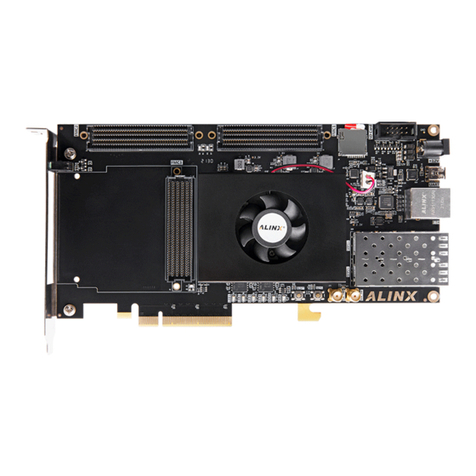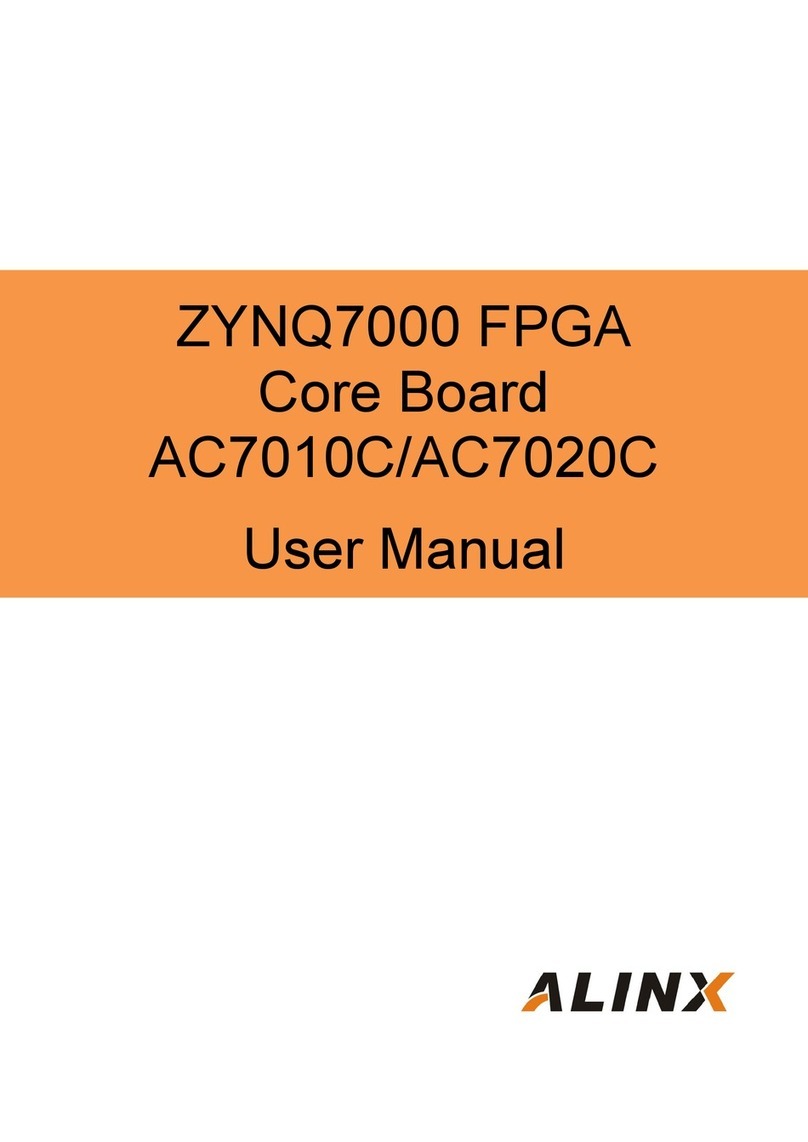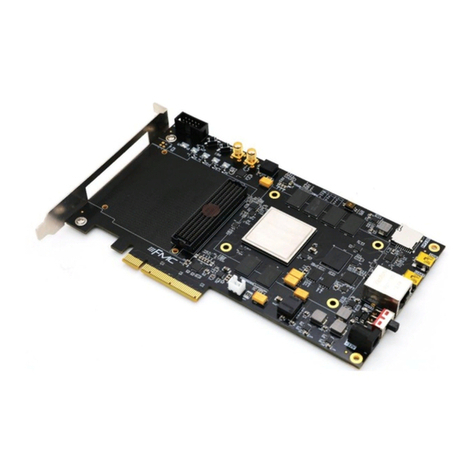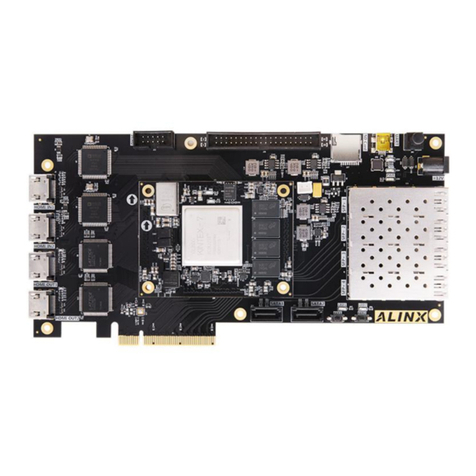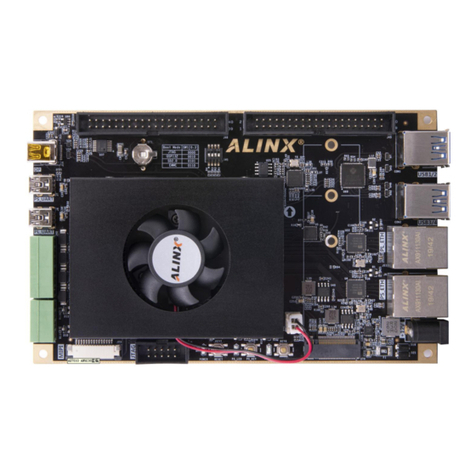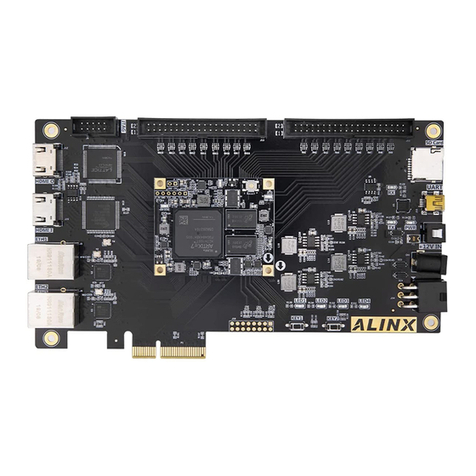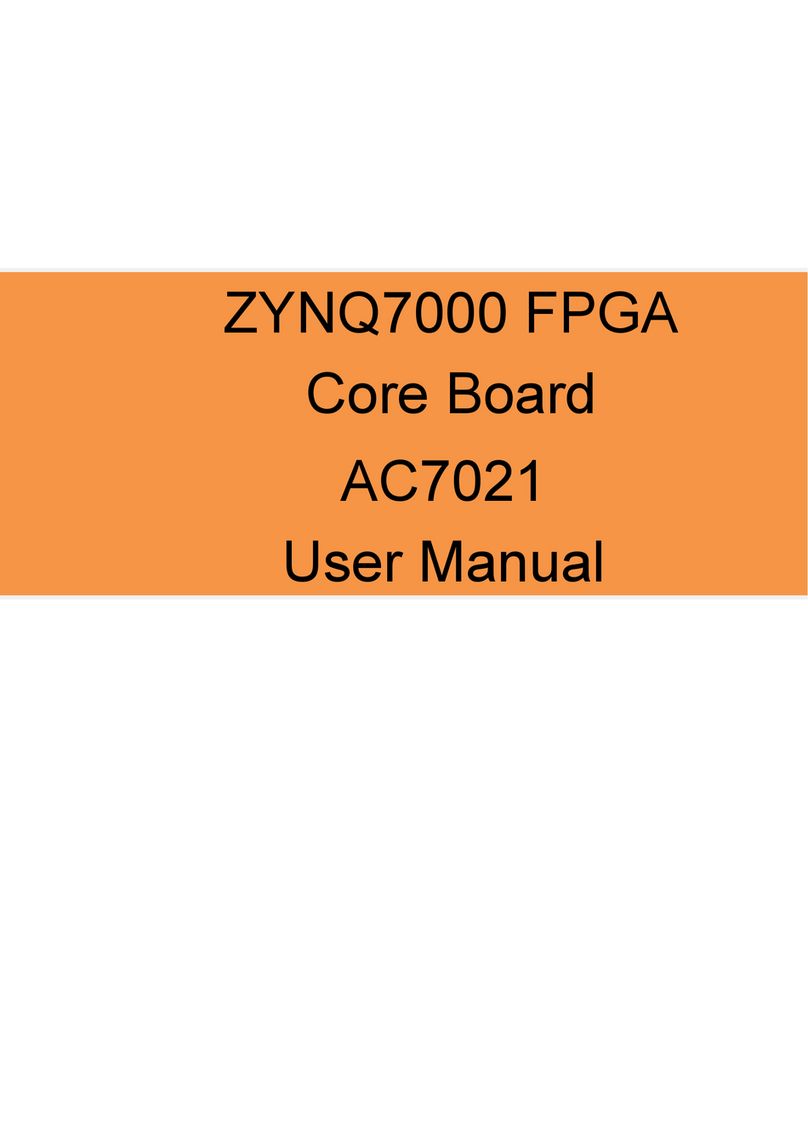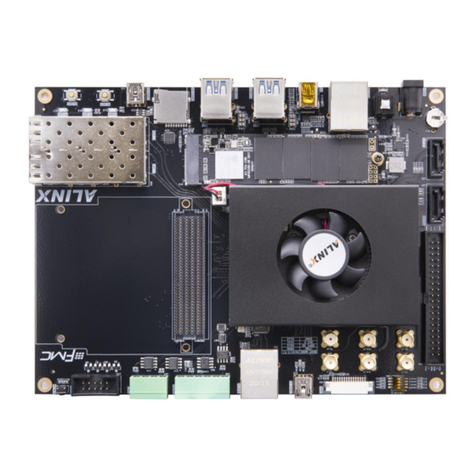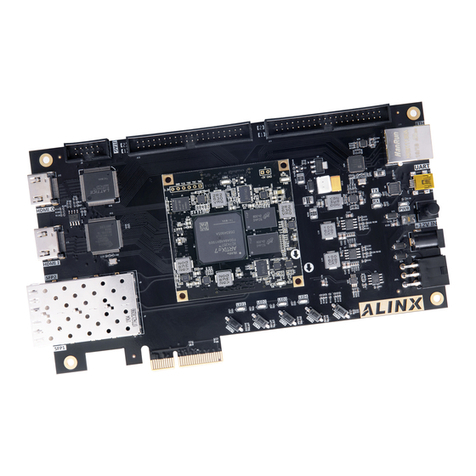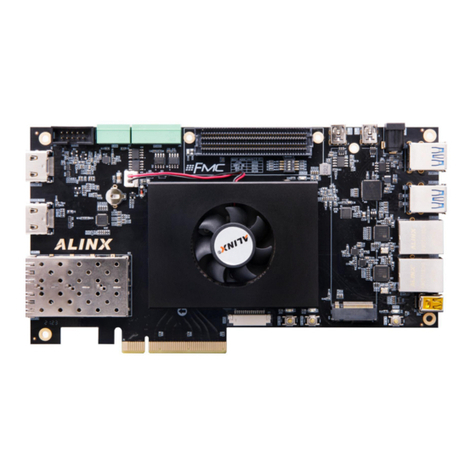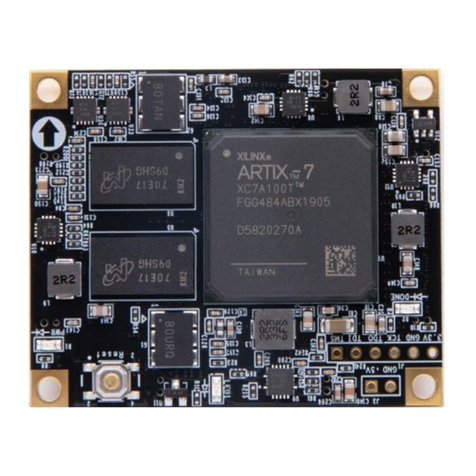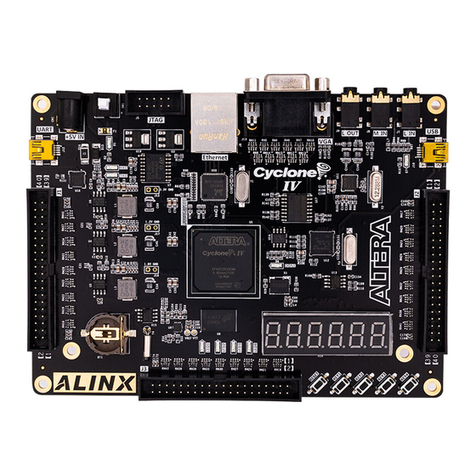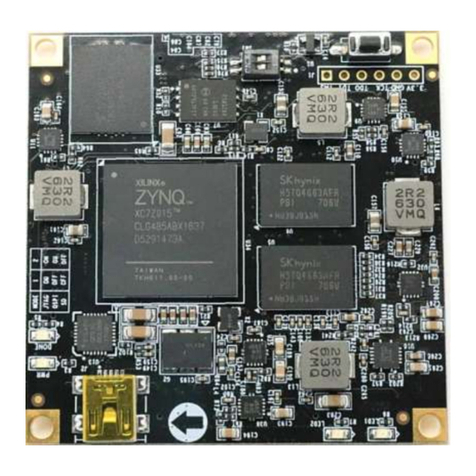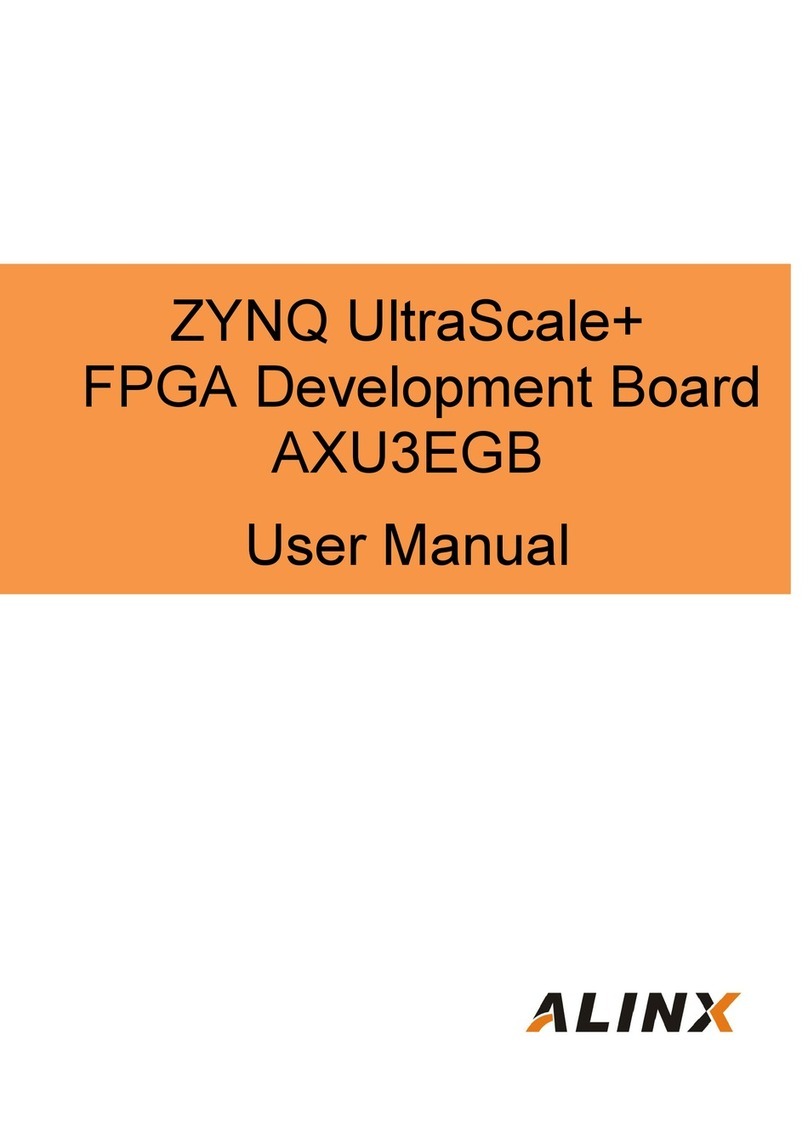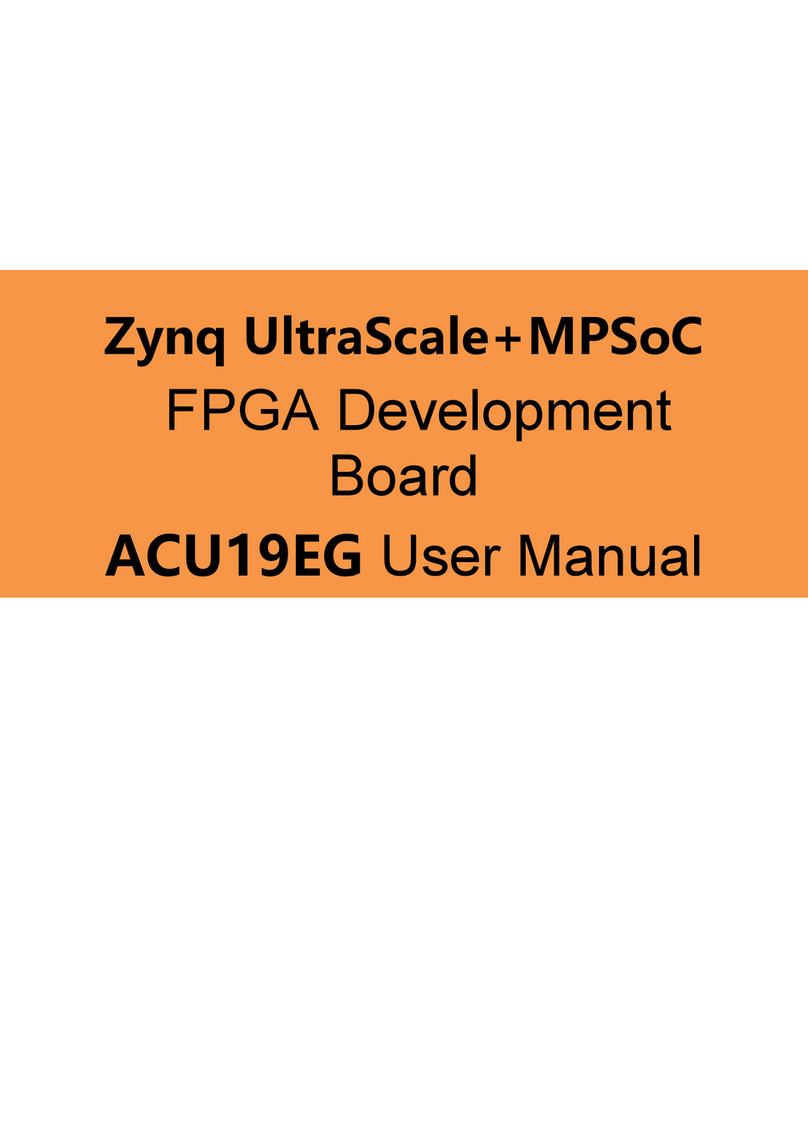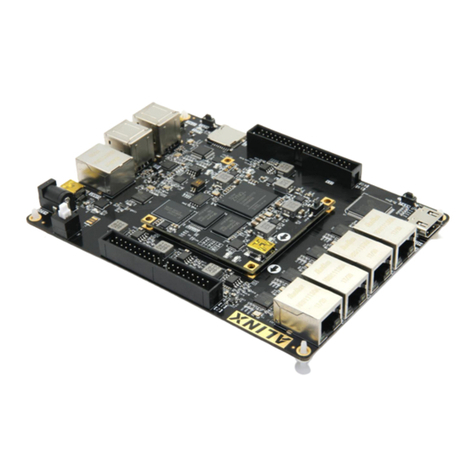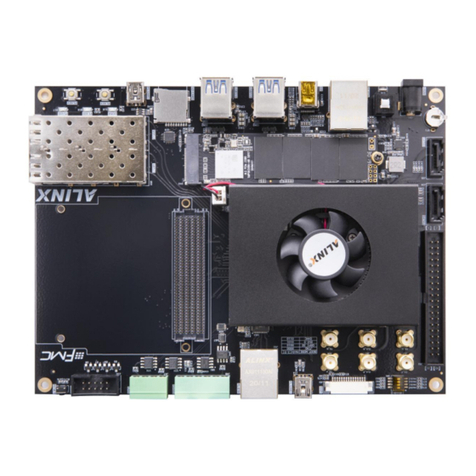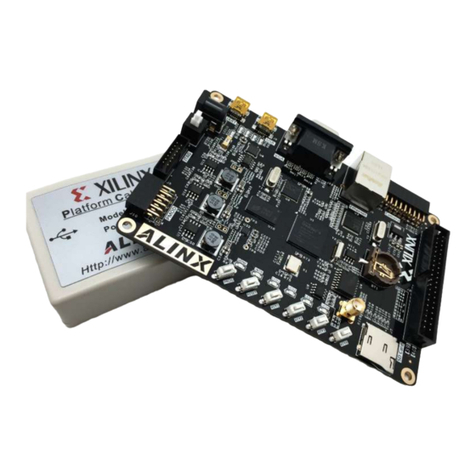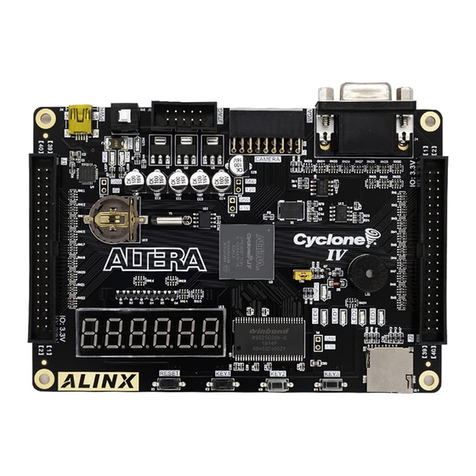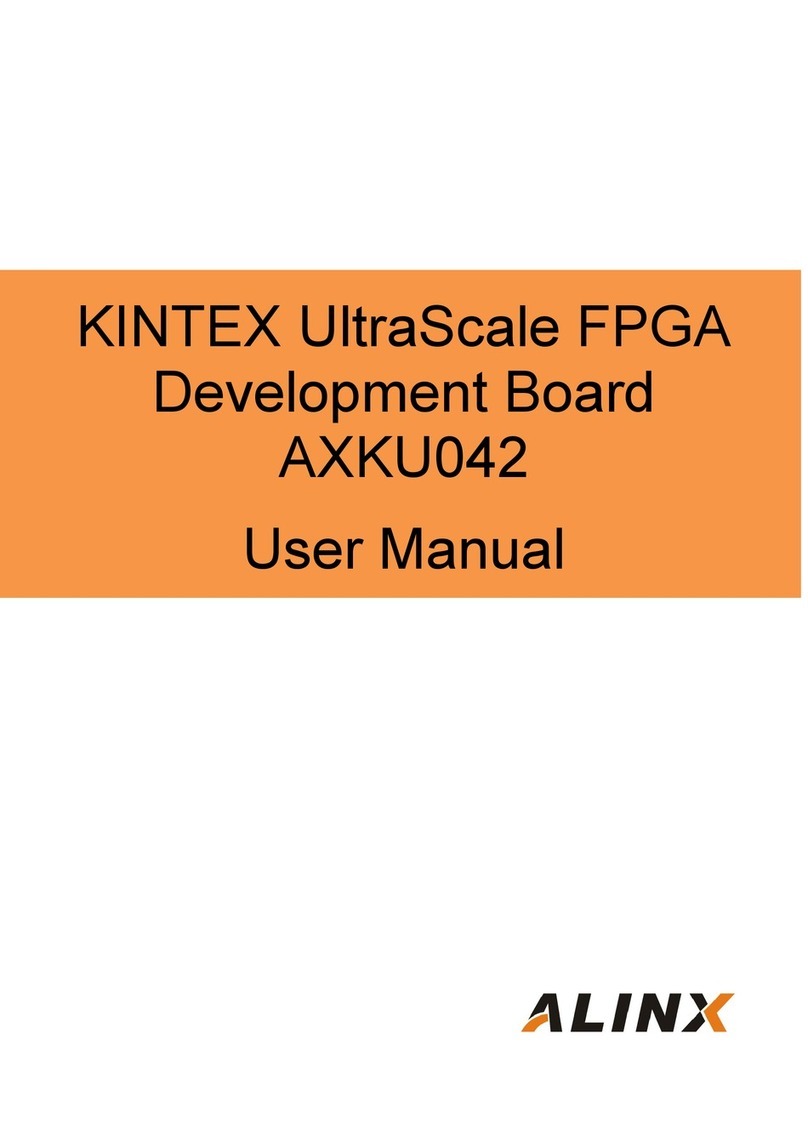
ARTIX-7 FPGA Development Board AX7202 User Manual
Table of Contents
Version Record .............................................................................................2
Part 1: FPGA Development Board Introduction .......................................... 6
Part 2: AC7200 Core Board Introduction ...................................................10
Part 2.1: FPGA Chip ........................................................................... 12
Part 2.2: Active Differential Crystal .....................................................13
Part 2.3: 200Mhz Active Differential clock ..........................................14
Part 2.4: 148.5Mhz Active Differential Crystal ................................... 15
Part 2.5: DDR3 DRAM ........................................................................16
Part 2.6: QSPI Flash ...........................................................................21
Part 2.7: LED Light on Core Board .................................................... 23
Part 2.8: Reset Button ........................................................................ 24
Part 2.9: JTAG Interface .....................................................................25
Part 2.10: Power Interface on the Core Board .................................. 26
Part 2.11: Board to Board Connectors ............................................... 27
Part 2.12: Power Supply .....................................................................34
Part 2.13: Structure Diagram ..............................................................35
Part 3: Carrier Board ..................................................................................36
Part 3.1: Carrier Board Introduction ................................................... 36
Part 3.2: Gigabit Ethernet Interface ................................................... 37
Part 3.3: SFP Interface ....................................................................... 39
Part 3.4: VGA display interface .......................................................... 42
Part 3.5: USB2.0 Interface ................................................................. 44
Part 3.6: SD Card Slot ........................................................................46
Part 3.7: USB to Serial Port ................................................................48
Part 3.8: RS232 Interface ...................................................................50
Part 3.9: EEPROM 24LC04 ................................................................51
Part 3.10: Real time clock DS1302 .................................................... 52
